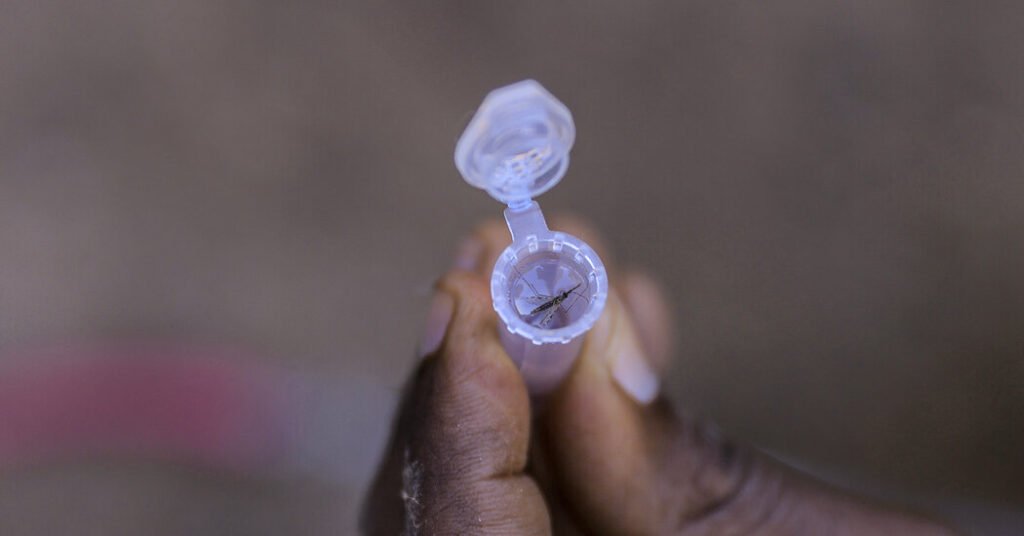Malaria infection rates are soaring in Ethiopia, where a combination of armed conflict, climate change and increasing mosquito resistance to drugs and insecticides are accelerating the spread of a disease the country once seemed under control. are.
By the end of September this year, the country had recorded more than 6.1 million malaria cases and 1,038 deaths, while in 2023 as a whole, more than 4.5 million malaria cases and 469 deaths were recorded. Worse, the number of cases could rise even further. This is because the peak malaria season begins in September due to seasonal rains and lasts until the end of the year.
“We are rapidly regressing and are back to where we were 10 years ago,” said Fitsum Tadesse, chief scientist who oversees the malaria program at the Almauer-Hansen Institute in the capital Addis Ababa.
The surge in malaria in Ethiopia could be a harbinger for other countries in the region where similar underlying biological factors exist, making more people vulnerable to war and climate change.
Dr. Tadesse believes that part of the increase in cases in Ethiopia may be due to increasing drug resistance. The parasite that causes malaria in East Africa is becoming increasingly resistant to treatments that have long been the cornerstone of the response.
At the same time, mosquitoes are becoming increasingly resistant to insecticides used in protective bed nets and indoor spraying programs. And they have evolved to evade diagnosis by some of the most common malaria tests.
“All the biological factors are converging here and it’s happening at the worst possible time,” Dr. Tadesse said.
The biggest spike in infections has been reported in the country’s Oromia region, where the federal government is battling separatist militias in a long-running civil war. The conflict between the Ethiopian military and the Oromo Liberation Army has escalated over the past five years, displacing more than 1.5 million people. Some areas have been inaccessible to humanitarian and aid groups for years, including an area known as the West Wellega zone, which recorded the highest number of malaria cases in 2024.
The fighting has weakened Ethiopia’s health system, disrupted malaria control efforts, and forced people to flee, making it difficult or impossible to seek treatment. Living in temporary shelters also makes you more susceptible to mosquito bites. They can then bring in malaria parasites and spread the disease to new areas. Ethiopia’s borders, including its northwestern border with Sudan, which is locked in a major civil war, are porous.
Humanitarian agencies have been unable to distribute mosquito nets, medicines, and diagnostic tests. Without prompt diagnosis and treatment, malaria can quickly spread to family members and even entire communities.
At the same time, climate change has made new regions of Ethiopia vulnerable. Towns with no previous history of malaria reported cases of the disease this year. Many outbreaks have been reported in high-altitude areas above 2,000 meters (approximately 6,560 feet) above sea level, where mosquitoes and the malaria parasites they carry have historically been inhospitable. The climate in these regions is becoming increasingly warmer and wetter, making conditions more hospitable to mosquitoes.
“We don’t yet know the intricacies of how climate change plays a role in all of this, but we do know that its effects are greater when everything else is out of order,” Dr. Tadesse said. Ta.
Ethiopia faces an additional threat from an invasive Asian mosquito called Anopheles that has become established in the country in recent years. Malaria was primarily a disease of rural Africa. But Steffensii is an urban mosquito, breeding in discarded soda cans and drains, and thriving in crowded cities. This has recently caused a spike in malaria cases in Dire Dawa city, alarming public health officials planning malaria programs for rural areas.
Steffensi also thrives on construction sites where large open water tanks are used in the manufacture of cement and bricks, and such sites are becoming increasingly common in rapidly urbanizing areas.
Sheeda Ahmed, head of health education and communication at the Oromia Health Authority, said some urban areas in the region reported their first-ever malaria cases this year.
After years of sustained investment that mirrors malaria control efforts elsewhere in sub-Saharan Africa, cases in Oromia region have fallen from 900,000 per year in 2011 to approximately 100,000 in 2019. did. But last year that number soared to 2.8 million, and in the past three months alone, 1.4 million people out of the region’s 45 million people were diagnosed with malaria.
Ahmed said part of the rise in cases reflects better case detection, as local health workers go door-to-door to detect new infections. said.
Many of these infections are serious. In 2023, only 623 people needed hospitalization to treat their symptoms, but in the past three months, more than 41,000 people were hospitalized, Ahmed said.
Abbay Tilahun has worked as a health worker for 15 years in West Wellega district, where the highest number of infections have been recorded.
“Malaria has occurred in the past, but this year has been exceptionally more severe than any other time of year,” Tilahun said.

